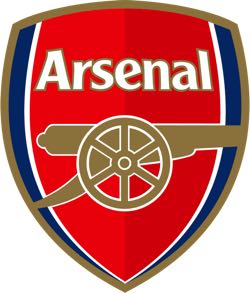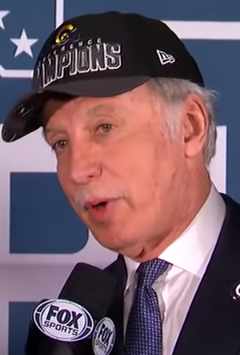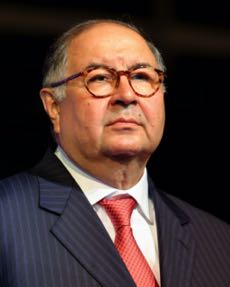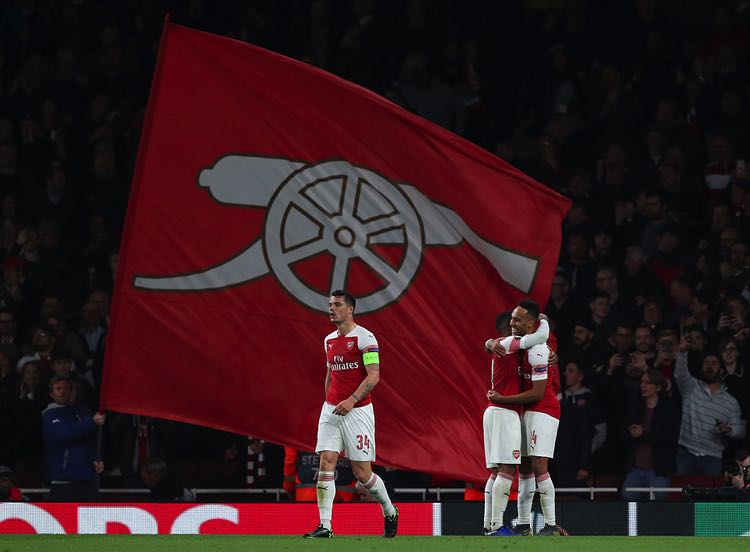Arsenal’s ownership is somewhat different to some other Premier League football clubs, as it is owned by a parent company named Arsenal Holdings plc. Arsenal Holdings is owned by Stan Kroenke, who is the sole shareholder in Arsenal Football Club, and also the CEO of Kroenke Sports Enterprises, the parent company of Arsenal Holdings and numerous other sports franchises throughout the world.
What Is Arsenal Holdings plc?

Arsenal Holdings is a non-quoted public limited company owned by Stan Kroenke that oversees numerous Arsenal-related subsidiaries. The company owns 12 subsidiaries in total, including Arsenal Football Club, the Emirates Stadium, Arsenal Stadium Management Company, as well as Arsenal Overseas Ltd, which is responsible for the Gunners’ worldwide merchandise sales.
Arsenal Holdings also manages property development in Highbury Stadium Square, at the site of the old Arsenal stadium, which was renovated into Apartments. This is a fairly uncommon way of running a football club, with the majority of others being owned by private individuals. Not only this, but Arsenal Holdings very rarely issue shares, and when they do, they are traded on NEX Exchange, which is a specialist market, and this does not include shares in Arsenal Football Club itself.
Who Is Stan Kroenke?

Stan Kroenke is an American businessman and billionaire, with a net worth of $10 billion, according to Forbes. He founded Kroenke Sports & Entertainment in 1999, to serve as a parent company to the numerous sports and esports franchises that he owns, including NBA team Denver Nuggets and MLS side Colorado Rapids, as well as Arsenal, of course.
Kroenke has also been nicknamed “silent Stan” due to his tendency to never give press interviews, and the fact that he rarely interferes with the day-to-day running of his businesses. As the sole shareholder of Arsenal, he has also garnered controversy for his role in attempting to create the European Super League in 2021, which would have included the north London side, but was abandoned due to mass objections across the footballing world.
How Did Kroenke Become the Sole Shareholder?

Kroenke initially bought into Arsenal in 2007, when he purchased a 9.9% stake in the club from ITV plc, and although he was initially treated with hostility by other shareholders, he was made a non-executive director in 2008. From this point, he was able to continually increase his stake in the club by purchasing the shares of other directors and shareholders, until he eventually held the largest number of shares by 2009, owning 29.9% of them.
However, a rival bid from a company known as Red and White Holdings, which was owned by Alisher Usmanov, a Russian billionaire, and Farhad Moshiri, who is the majority owner of Everton, rivalled Kroenke’s stake in the club. This led to the press speculating that a bidding war had occurred between the two.
Red & White were able to amass a 29.25% stake in the club by 2011. This didn’t deter Kroenke, who continued to purchase shares from other Arsenal directors, until he owned 66.64% of the club. He then went on to make an offer for the remaining shares, purchasing those previously owned by Usmanov and Moshiri, as well as those owned by former players and the Arsenal Supporters Trust, meaning that he became the only shareholder, and fans were no longer able to purchase a stake in the club.
History of Arsenal’s Ownership
As Arsenal, known as Dial Square at the time, was founded as an amateur club by workers from the Royal Arsenal factory in 1886, it was originally mutually owned, with each member of the club contributing sixpence towards its creation. It was not until 1893 that the club, by then named Woolwich Arsenal, became a professional club, as the Gunners became the first Southern team to join the Football League.
Henry Norris Purchases Club
The club therefore became a limited liability company but struggled financially due to low attendances at their Woolwich ground. However, in 1910, in order to combat the near bankruptcy of the club, a local tory governor named Henry Norris, who was also the owner of Fulham FC, purchased the club and decided to move Arsenal to Highbury, in north London. This was a financially successful move, as revenues increased significantly as attendance at matches improved greatly. Despite this, Norris was forced to resign in 1929 after a scandal involving club expenses, leaving shares in the north London club up for grabs.
Samuel Hill-Wood & Sir Bracewell Smith Take on Club
By the Second World War, the majority of Arsenal’s shares were split between two shareholders, Samuel Hill-Wood, and the future Mayor of London, Sir Bracewell Smith. Neither man was paid a single dividend, as the shares had very low value, and their stakes in the club were therefore viewed as a form of charity, providing sporting entertainment for working-class north Londoners. After Smith passed away, his shares were divided amongst his children and grandchildren, whilst Hill-Wood’s shares were passed onto his son, and then his grandson, Peter Hill-Wood, who eventually became chairman of Arsenal.
Stan Kroenke Becomes Only Shareholder
In the 1980s, the majority of Hill-Wood’s shares were sold to David Dein, whose stake was purchased by Usmanov in 2011. There were also shares, including Smith’s, sold to ITV plc, Lansdowne Partners, a hedge fund, and Danny Fiszman, a London diamond dealer, amongst others. However, Kroenke eventually purchased all of these, and became the club’s only shareholder, meaning that fans and investors alike are no longer able to purchase a stake in the club.

